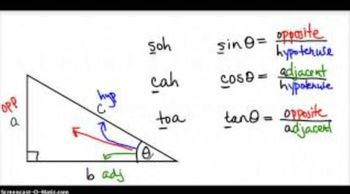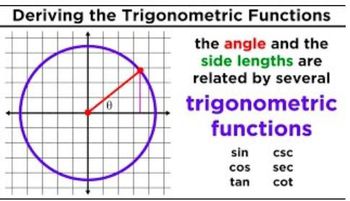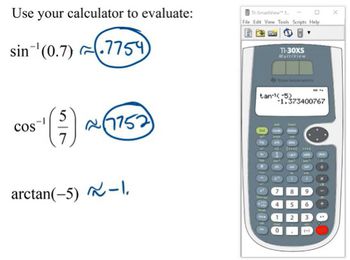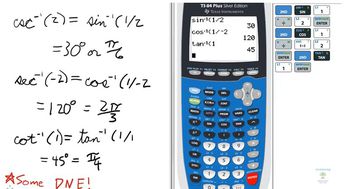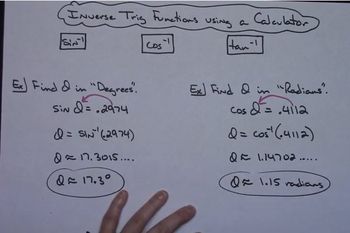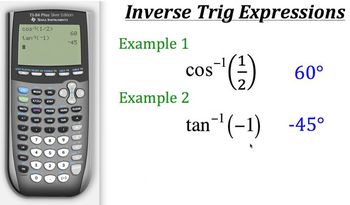Table of contents
- 0. Review of College Algebra4h 43m
- 1. Measuring Angles39m
- 2. Trigonometric Functions on Right Triangles2h 5m
- 3. Unit Circle1h 19m
- 4. Graphing Trigonometric Functions1h 19m
- 5. Inverse Trigonometric Functions and Basic Trigonometric Equations1h 41m
- 6. Trigonometric Identities and More Equations2h 34m
- 7. Non-Right Triangles1h 38m
- 8. Vectors2h 25m
- 9. Polar Equations2h 5m
- 10. Parametric Equations1h 6m
- 11. Graphing Complex Numbers1h 7m
2. Trigonometric Functions on Right Triangles
Trigonometric Functions on Right Triangles
Problem 91a
Textbook Question
Concept Check Suppose that 90° < θ < 180° . Find the sign of each function value. tan θ/2
 Verified step by step guidance
Verified step by step guidance1
<insert step 1> Identify the range of \( \theta \) given as \( 90^\circ < \theta < 180^\circ \). This places \( \theta \) in the second quadrant of the unit circle.>
<insert step 2> Recall that in the second quadrant, the sine function is positive, and the cosine function is negative.>
<insert step 3> Use the identity for the tangent of half an angle: \( \tan \frac{\theta}{2} = \pm \sqrt{\frac{1 - \cos \theta}{1 + \cos \theta}} \).>
<insert step 4> Since \( \cos \theta \) is negative in the second quadrant, the expression \( 1 - \cos \theta \) is positive, and \( 1 + \cos \theta \) is less than 1 but positive.>
<insert step 5> Therefore, \( \tan \frac{\theta}{2} \) is positive because the square root of a positive number is positive.>
Recommended similar problem, with video answer:
 Verified Solution
Verified SolutionThis video solution was recommended by our tutors as helpful for the problem above
Video duration:
4mPlay a video:
Was this helpful?
Key Concepts
Here are the essential concepts you must grasp in order to answer the question correctly.
Quadrants of Trigonometric Functions
In trigonometry, the unit circle is divided into four quadrants, each corresponding to specific ranges of angles. For angles between 90° and 180° (the second quadrant), sine is positive while cosine and tangent are negative. Understanding which functions are positive or negative in each quadrant is essential for determining the sign of trigonometric function values.
Recommended video:

Quadratic Formula
Half-Angle Formulas
The half-angle formulas are used to find the sine, cosine, and tangent of half of a given angle. For tangent, the formula is tan(θ/2) = sin(θ)/(1 + cos(θ)). This is particularly useful when analyzing angles that are not standard, as it allows us to relate the function values of the original angle to those of its half.
Recommended video:

Quadratic Formula
Sign of Tangent in the Second Quadrant
In the second quadrant, where 90° < θ < 180°, the tangent function is negative because it is defined as the ratio of sine to cosine (tan θ = sin θ / cos θ). Since sine is positive and cosine is negative in this quadrant, the overall value of tangent becomes negative. This understanding is crucial for determining the sign of tan(θ/2) when θ is in the specified range.
Recommended video:

Quadratic Formula

 6:4m
6:4mWatch next
Master Introduction to Trigonometric Functions with a bite sized video explanation from Nick Kaneko
Start learningRelated Videos
Related Practice







